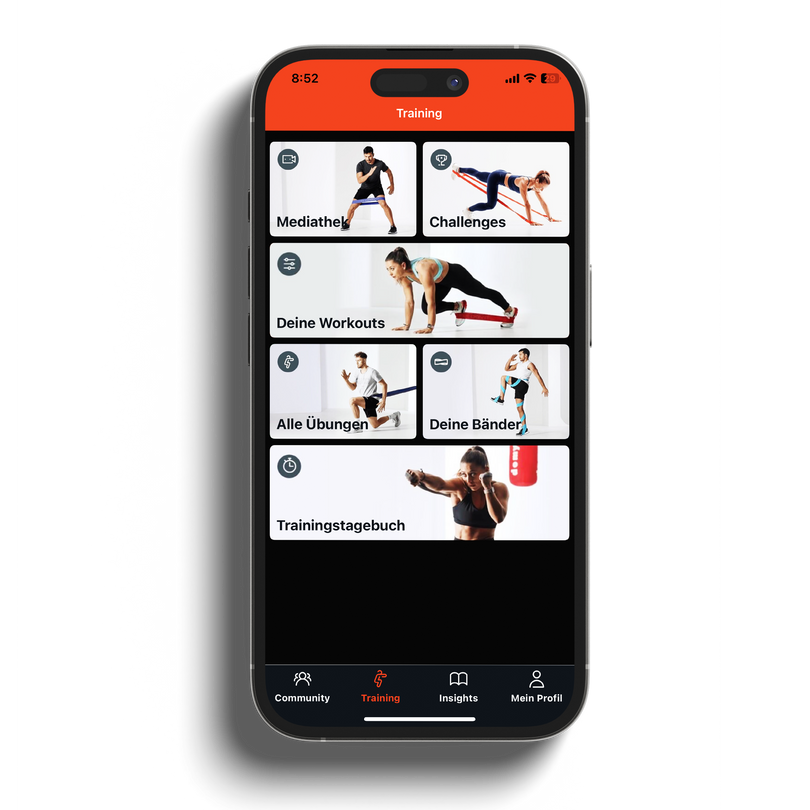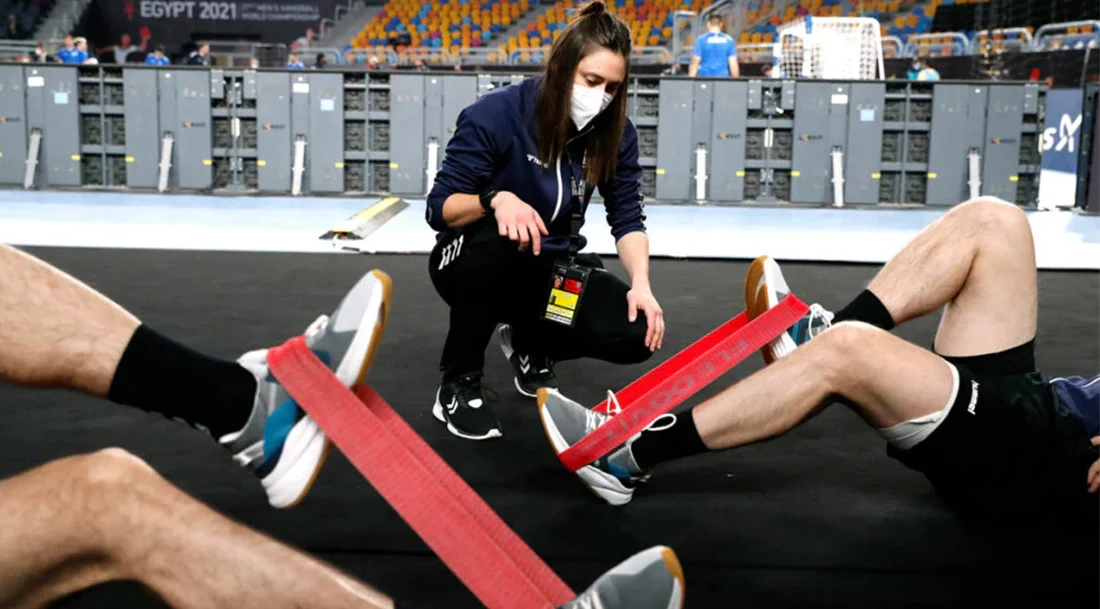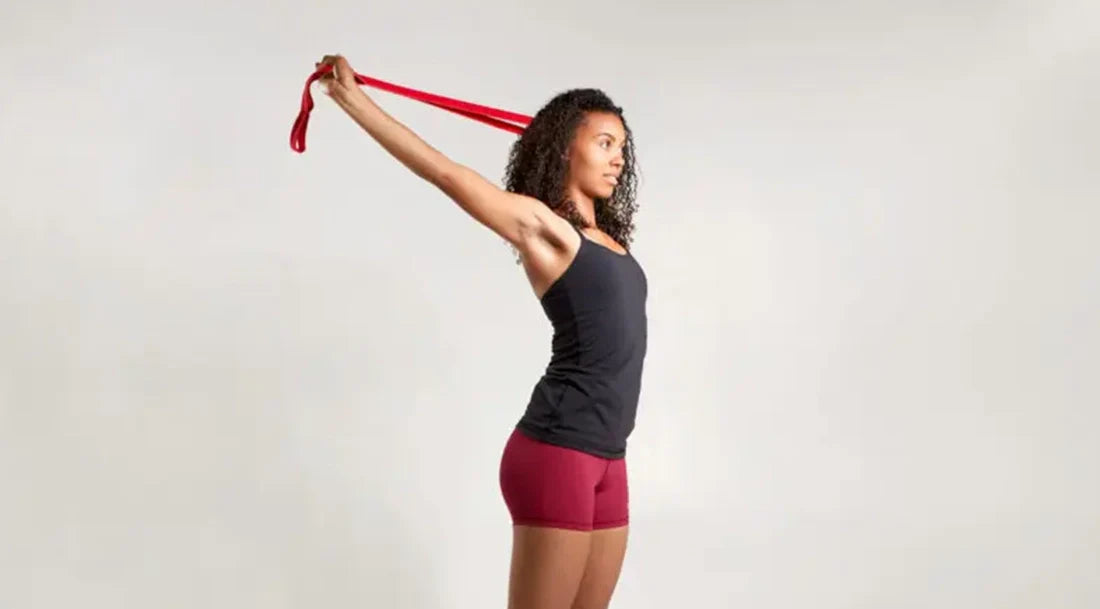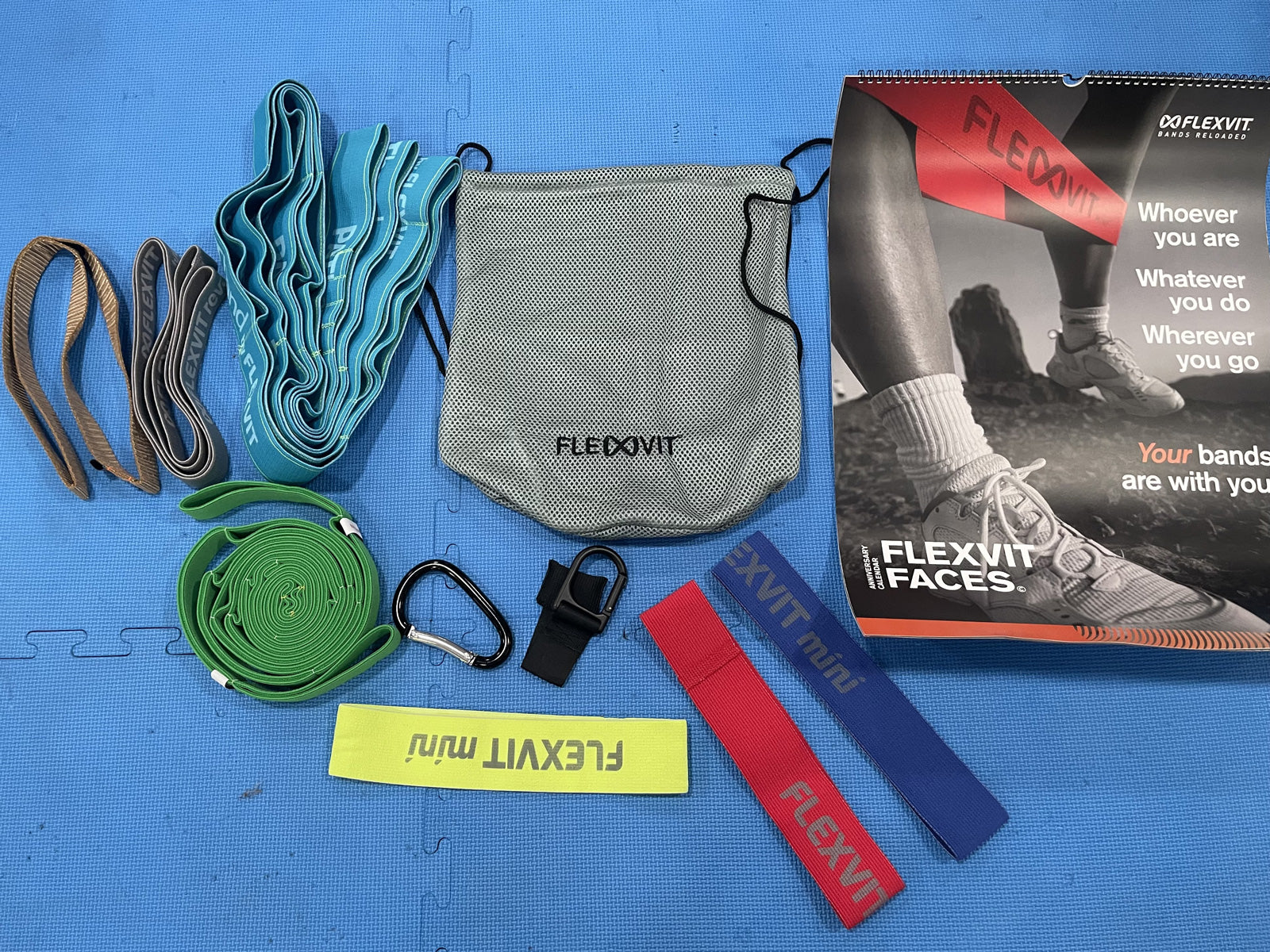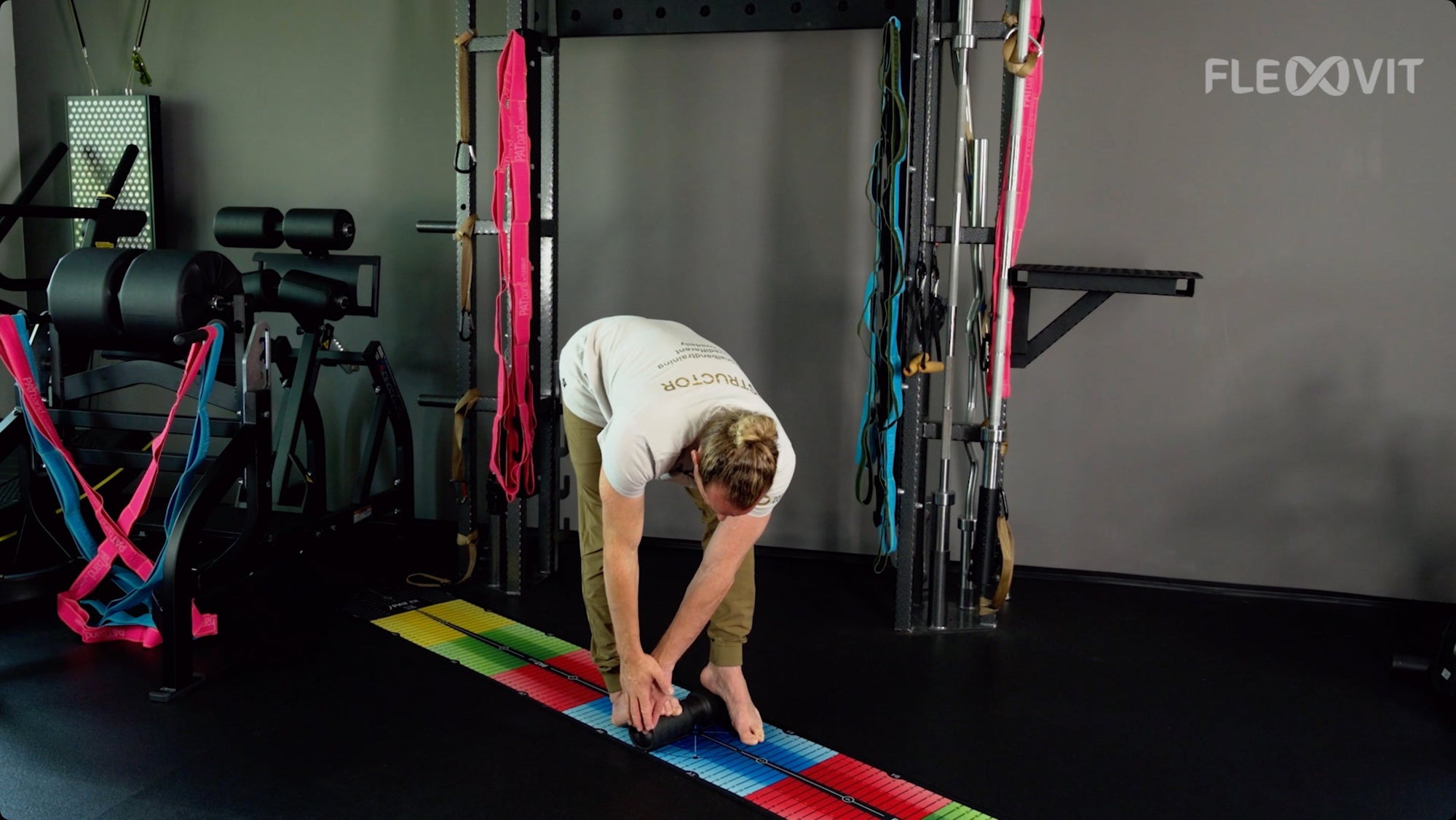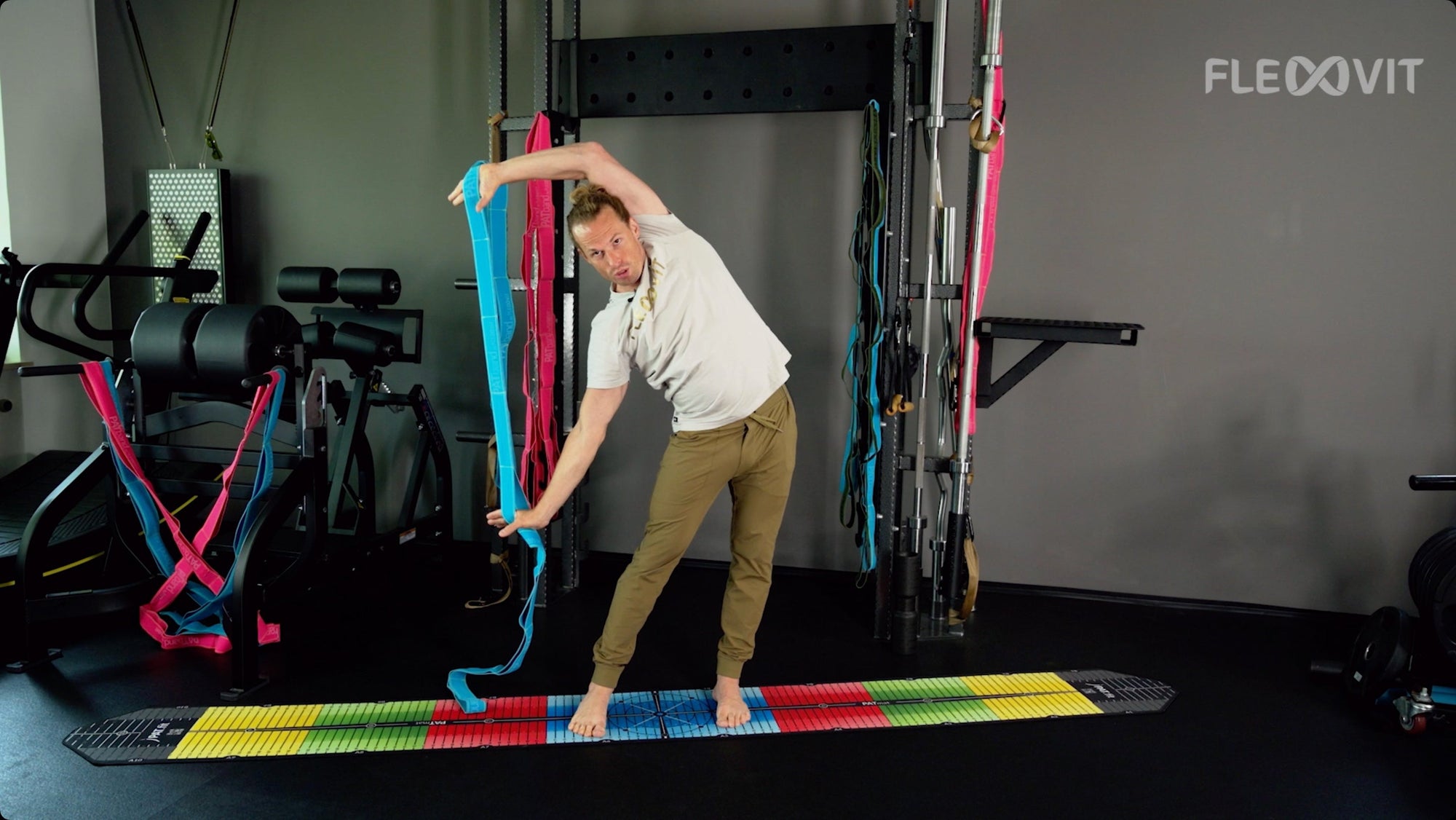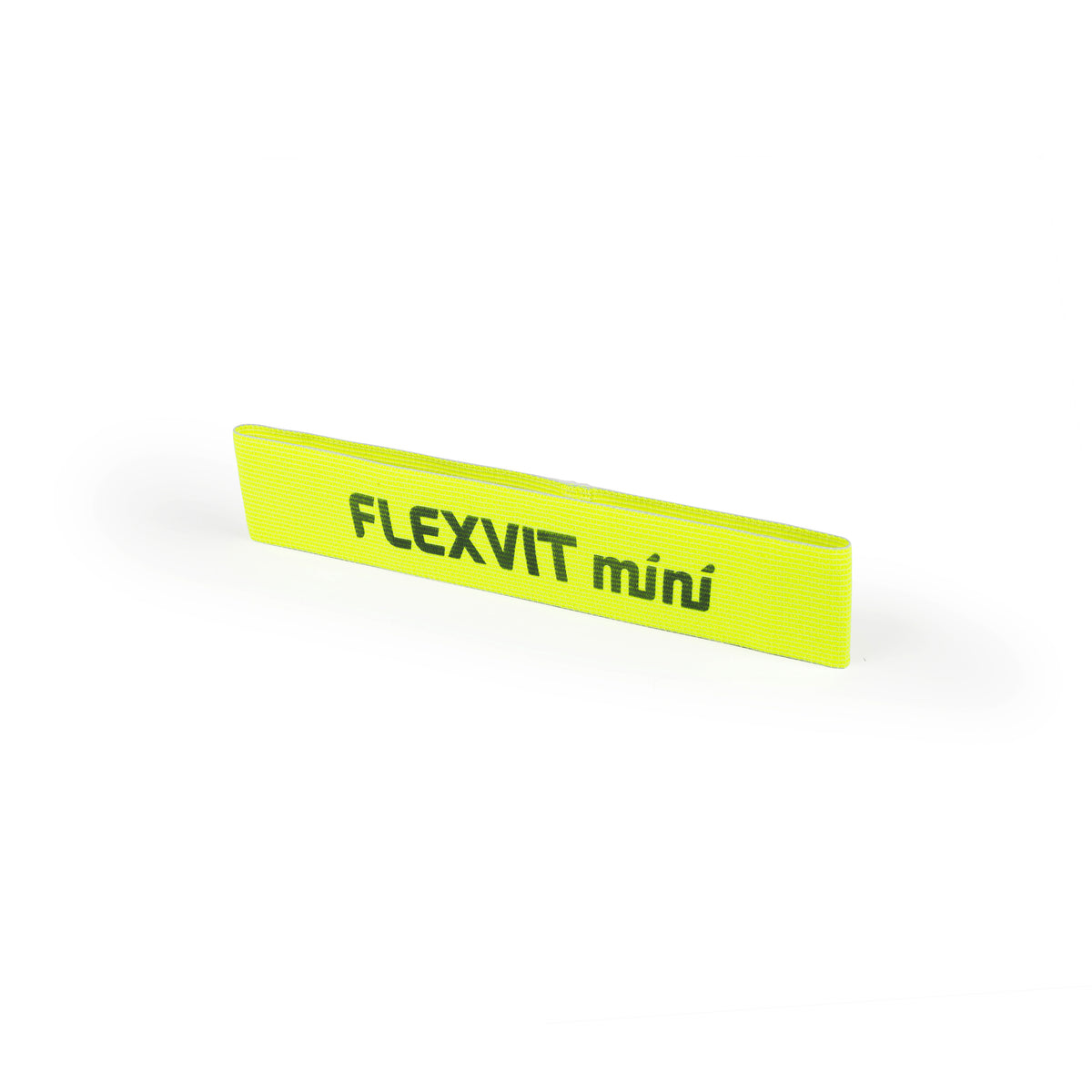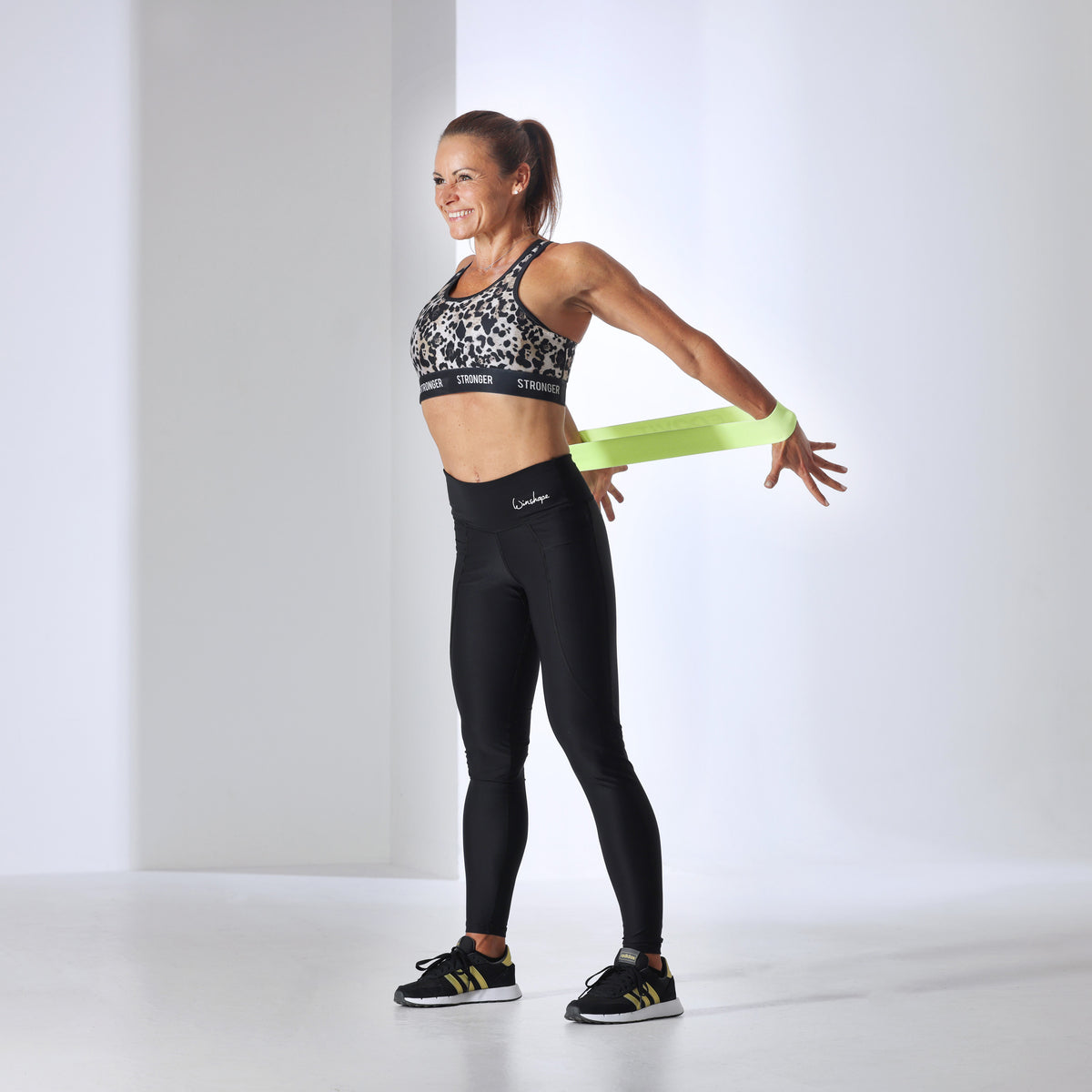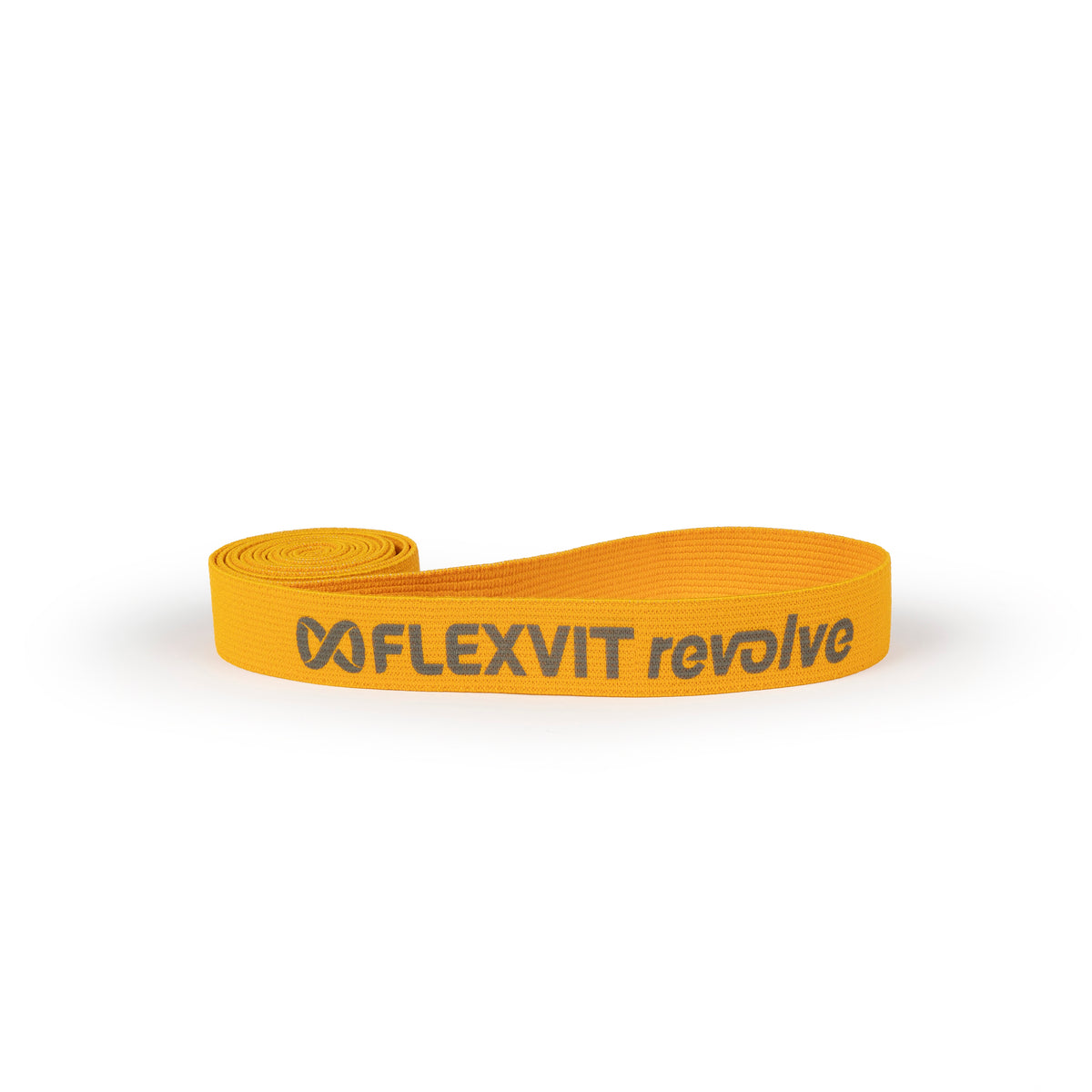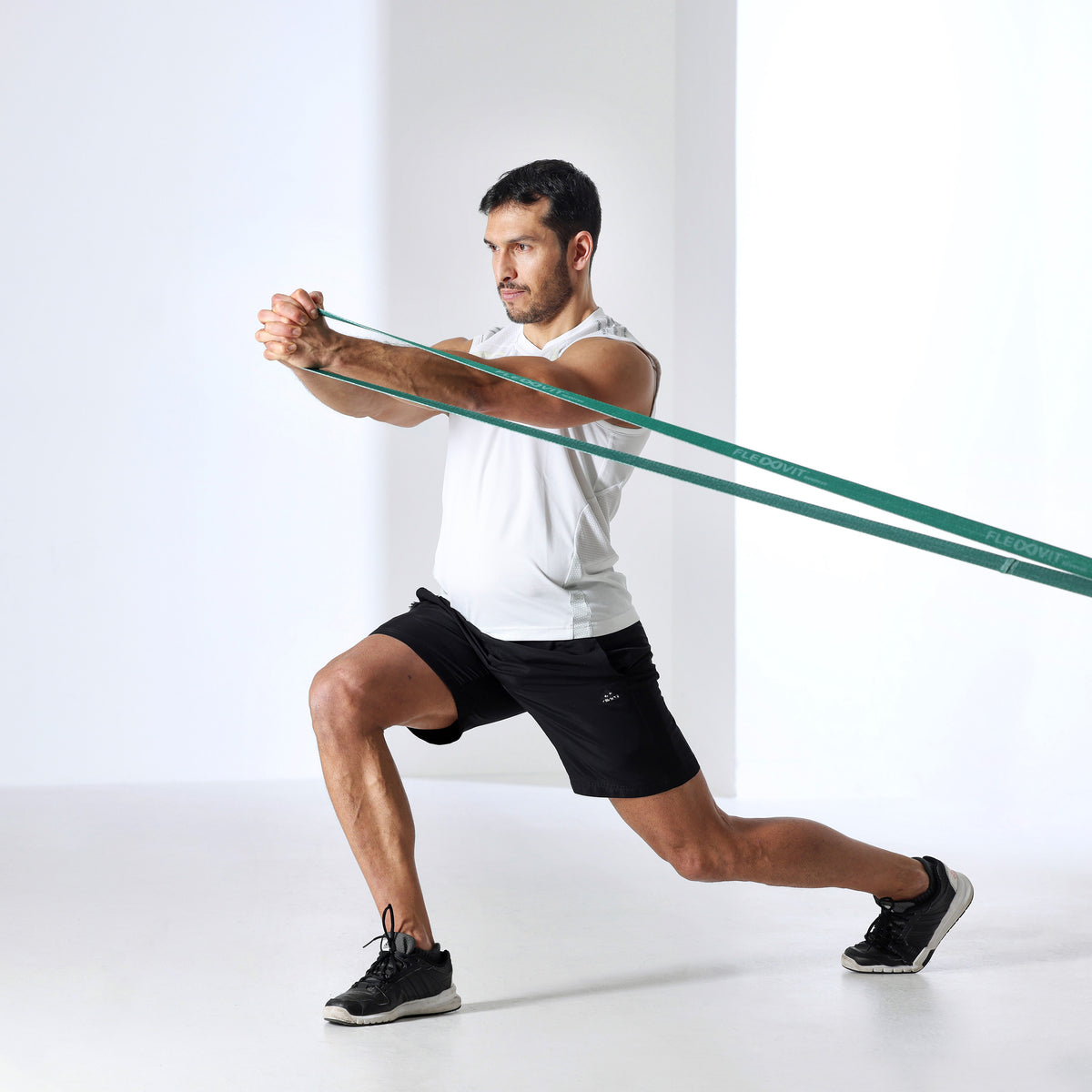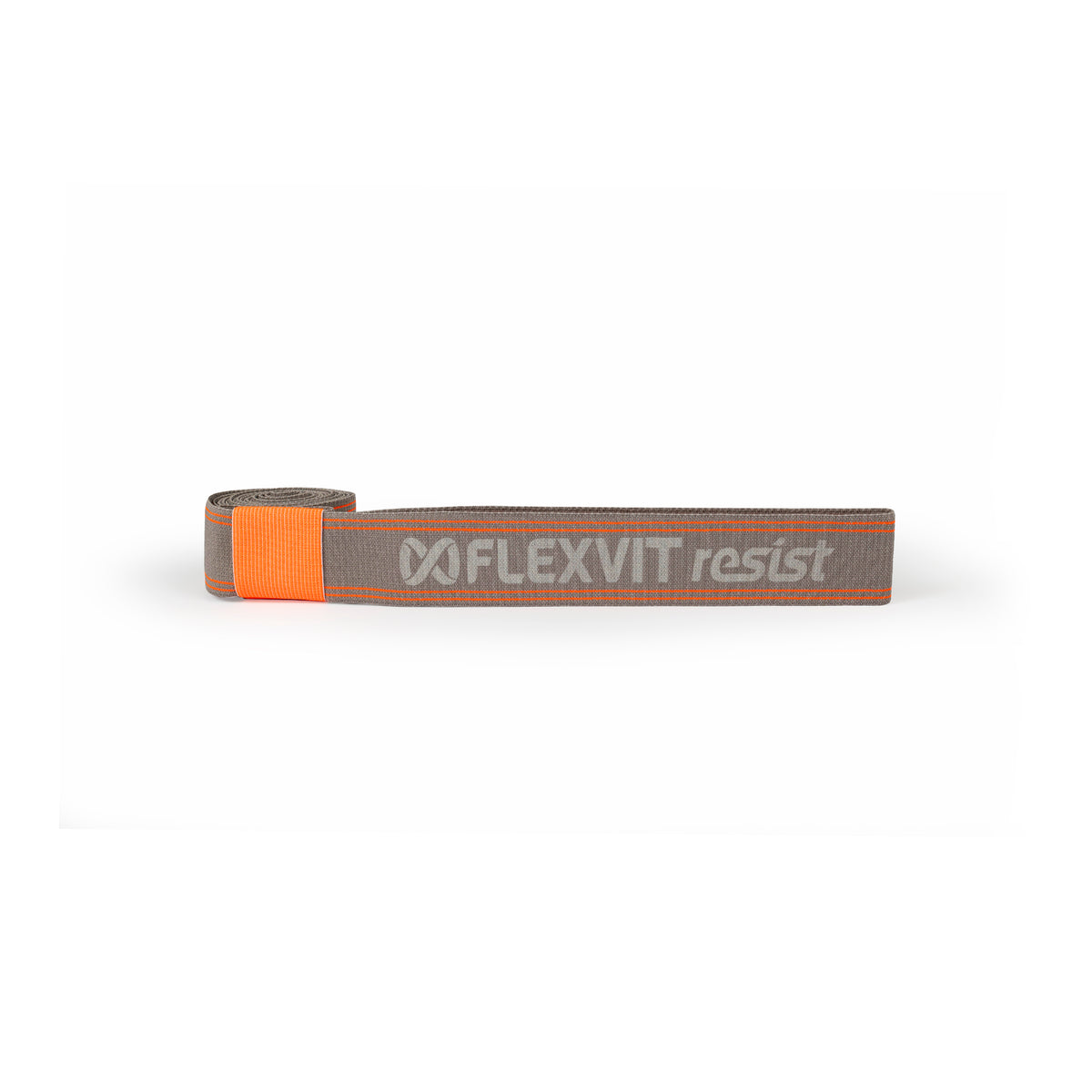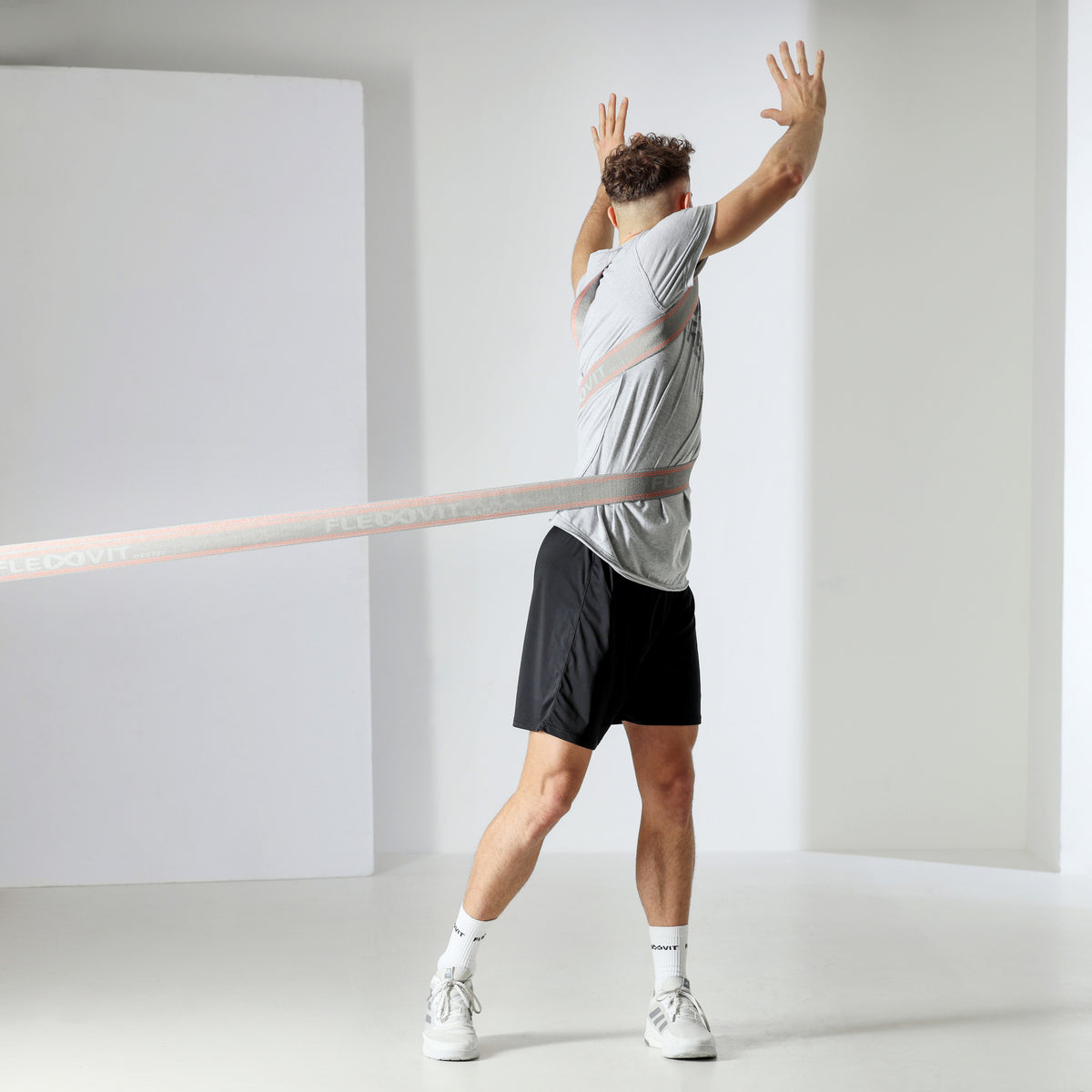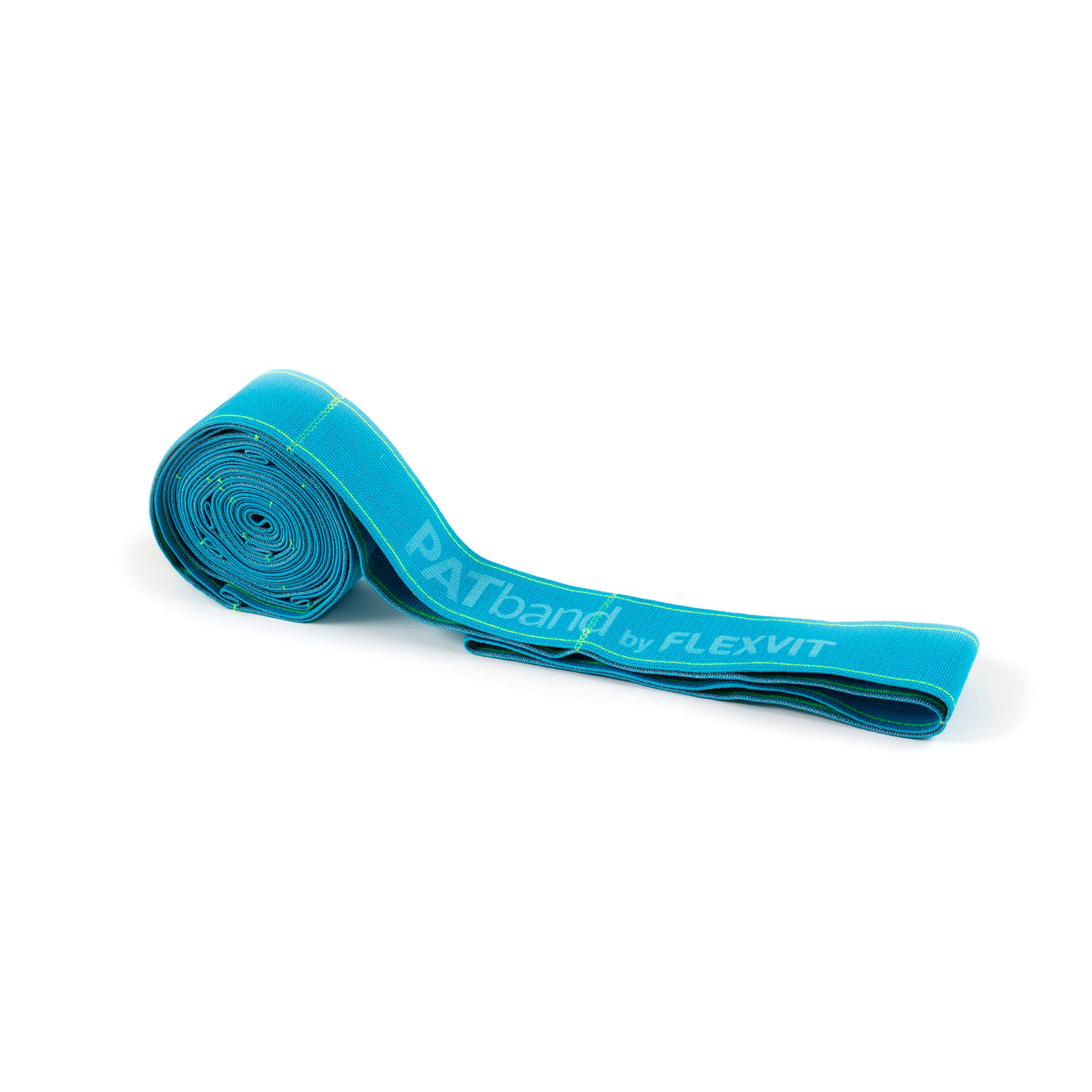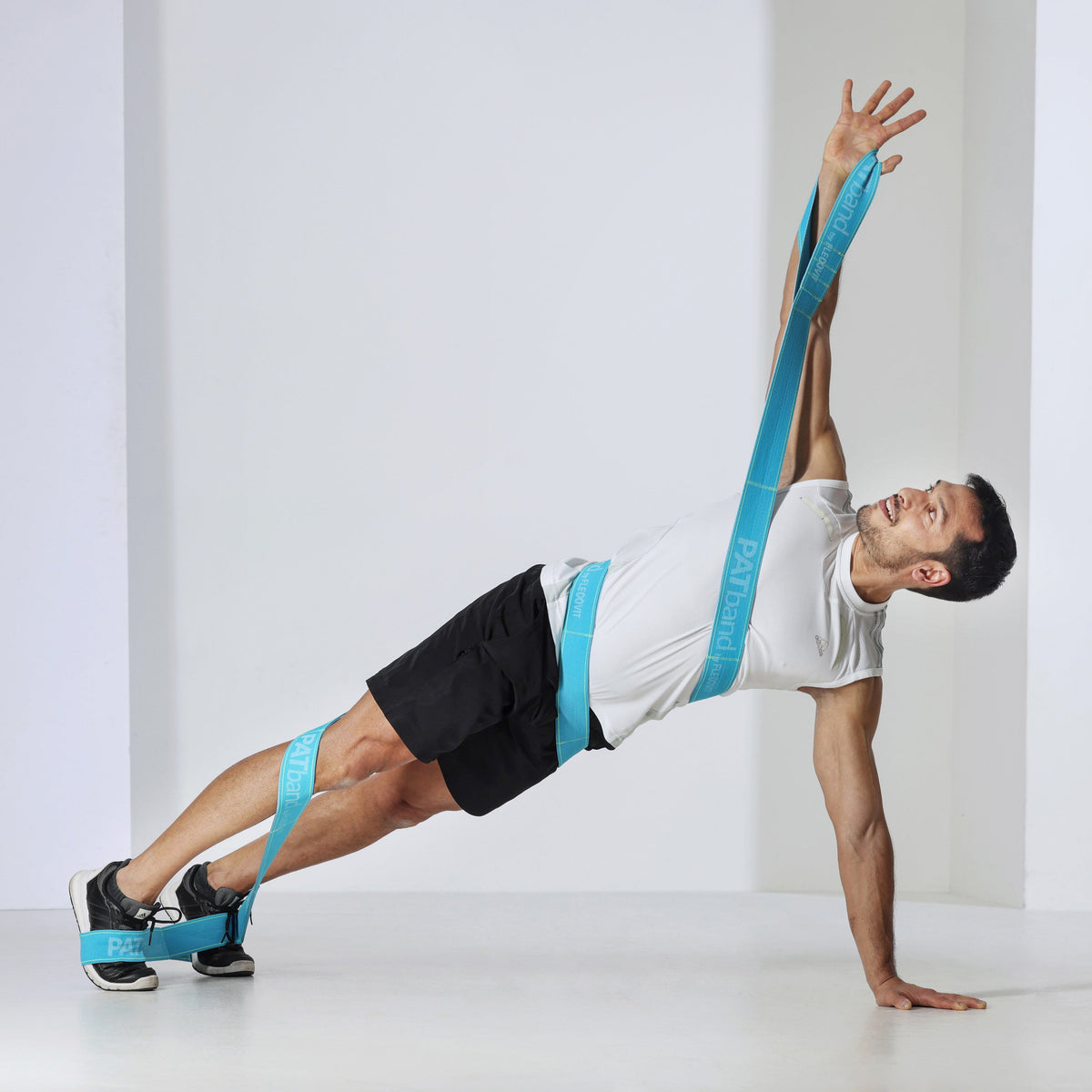Why running and resistance bands? When running, one thing is often in the foreground: the route. For runners, it's about becoming faster over a certain distance or increasing the distance yourself. What many people underestimate is that, in addition to regular running, strength training and especially training with resistance bands also bring enormous benefits.
Why resistance bands?
Resistance bands are strong elastic bands used for strength, coordination and mobility training. Not only do athletes use them to improve their performance, but physical therapists also rely heavily on these tools to help people recover. Why shouldn't the bands also bring benefits in running training?
Here's how to use the bands: By working against the resistance of the band, you build strength in a gentle but effective way. Thanks to the different strengths, this gentle training can be converted into a sweaty strength session in no time. Whether it's stretching or strength, you can use the resistance bands to support your running training in a variety of ways.
Another special advantage is that the bands are small and easy to take with you anywhere. Whether as a warm-up before running, for stretching afterwards or as an external full-body workout - the bands offer comprehensive and versatile options.
Check out our practical athlete sets for your functional band training!
Running and Resistance Bands: Avoid Injuries
When you use resistance bands for your strength training, you not only train the large muscle groups, but also the smaller muscles in the joints. If you also mobilize and stabilize this area around your joints during your training, you can prevent injuries.
Many injuries to runners are due to overuse, such as: B. Hip joint problems and runner's knee. These injuries are associated with weak hip muscles, which can be easily corrected with resistance band exercises. You can find exercises for this further down in the article.
Compared to traditional weights or exercise machines, resistance bands are known to put less strain on the joints. This means that during your strength training you are still protecting your joints that are stressed by running. Even if you are already struggling with joint pain or are even recovering from an injury, you can use resistance bands to exercise in an adapted and gentle manner (check with your doctor beforehand to find out which exercises you can do safely).

Running and Resistance Bands: Improve Performance
The bands also help to correct muscular imbalances and improve muscle activation. This means that the movements you make while running become more efficient. Logically, your running performance will improve if each of your movements effectively gets the maximum amount of strength, endurance and flexibility out of you.
For example, studies have shown that middle-distance runners were able to improve their performance by doing squat jumps with resistance bands. These jumps activate and strengthen your leg muscles, just as you can improve the stability of your knees and ankles.
The FLEXVIT Mini set of 6 mini bands with all different resistances!
Banded exercises for runners
Resistance band training for runners typically targets the leg muscles, specifically the quadriceps and hamstrings. The focus is also on the buttocks and the lower leg muscles, i.e. the calves. We have put together a few exercises for you that will bring you closer to your running goals and make you better as a runner:
1. Mobilize & stabilize hips
Mobility and stability in the hips are essential for a good runner. The hip and glute muscles are opponents and together influence your stride length. Part of their interaction is the so-called thigh band tensioner. This skeletal muscle is part of the outer hip muscles and is responsible for spreading, bending and internally rotating the thigh - also important for you as a runner: it also keeps your knee joint stable. In these exercises we'll show you how you can train these two skills while activating your core for better posture:

Standing scale with resistance:
Use a FLEXVIT Revolve for this exercise. Place it around your shoulder and your foot, which you move upwards while standing on the scales. To start, stand with your feet hip-width apart and keep your torso and stomach active - because balance and your core also play an important role in this exercise. You can also place your hands on your hips to support your posture. Now lift the leg with the FLEXVIT Revolve attached to it as stretched out as possible backwards and upwards. At the same time, your upper body moves forward (like a scale). Your lifted leg and your upper body should always form a straight line at the same height. Meanwhile, your supporting leg is slightly bent and stable. Be particularly careful not to twist your hips, as this will relieve strain on your hip and gluteal muscles and rob the exercise of its important effect. Your upper body remains active and straight throughout the entire execution. Hold the balance for a few seconds and then return slowly and controlled to the starting position. On the one hand, the FLEXVIT Revolve helps you to maintain your position, and on the other hand, the resistance helps to provoke the stretching of the entire back of your body.
2. Strengthen your legs
You probably already know the classic lunge. However, with our FLEXVIT bands you can take this standard exercise to a new level.
Basic lunge exercise
Stand with your feet hip-width apart, your torso and stomach activated and straight. Now take a step, either backwards, forwards or to the side. The leg that takes the step then bends to about a 90 degree angle. Your shin should be slightly above the ground and your knee should not protrude too much past your ankle. Keep your upper body upright and stable throughout the entire execution. Then step back into your starting position in a controlled manner.
Variation: Lunge with band for more resistance:
Stand up in a walking position - in this exercise variation you don't step back into a hip-width stance, but are in a high or low lunge the entire time. Now stand on the FLEXVIT Revolve with your front foot and place the large loop around your shoulder. You should feel a slight pull here. Now bend your front leg and get into a deep lunge. Hold this position down here for a few seconds and then stand up again. The resistance of the band now makes your leg muscles work extra. Here too, an upright posture and controlled movement are essential.
Variation: Lunge with side pull:
For this exercise variation, use the FLEXVIT Resist and attach it to a low-lying anchor point or have your training partner hold it. You put the band around your shoulder and then position yourself so that you feel a pull to the side of your lunge. This will challenge your balance and core in addition to your normal lunge. If everything is in place, you can get started. You can perform the lunge described above backwards, forwards or to the side. In each variant, the resistance of the band affects your balance and so your thigh muscles, your buttocks and your core are activated and trained.
3. Stabilize knee and ankle joints
When running, it is extremely important that the ankle and knee joints are stable. If you bend outwards or inwards, strain occurs on the tendon and bone structures in the joints. These stresses can not only be harmful to your health and lead to injuries, but they also take away the energy and resources that should actually go into your run. So if you have a straight, clean leg axis when running, you move effectively and let your energy flow exactly where it should go. In these exercises we will show you how you can stabilize your joints:
Lunge with leg axis stabilization:
The lunge step described above can also be used to stabilize your knee joints. Also use a FLEXVIT Resist for this exercise. Fix the band to a low anchor point or have your training partner hold it. Position yourself here so that the resistance acts on the side of your leg. Then place the band on your upper shin just below the knee. Here, too, you start in a walking position and then move from a high to a low lunge. The band should now pull your knee either inwards or outwards and you actively counteract it, because of course you want to keep your knee stable and straight despite this external force. Let your thigh and glute muscles work and at the same time ensure more stable joints for your next run.
You can also find all of these exercises, including clear explanatory videos and other variations in our free FLEXVIT app.
Activate glutes and calves:
With this exercise you activate your buttocks and calves, while also training your joint stability in your feet and knees. To do this, place a FLEXVIT Mini around your ankles and stand slightly less than hip-width apart. Now jump your feet apart in a controlled manner. Keep your legs and therefore your joints straight and do not allow your knees or ankles to bend inwards. Then jump back to the starting position. This exercise may sound simple, but depending on the strength of your mini band, you will start to feel your buttocks and calves after a few repetitions and sets.
Train your core
When you use resistance bands, you also train your core and leg muscles. These muscle groups are activated and strained because you have to maintain your balance when remaining in certain positions. This activates your deep muscles and sustainably strengthens your core - even without lifting heavy weights. Many runners neglect training their core. However, as an ambitious athlete, you should also include this muscle group: A strong core helps your overall posture, and thus also your running form. The stronger your core muscles are, the better your overall stability when running. And this stability is the perfect starting point for a powerful and effective running style.
Running in old age: maintaining muscle mass
Older runners may be fit, but they are just as susceptible to sarcopenia (the loss of muscle mass with age) as anyone else. Strength training is ideal for maintaining your muscle mass even as you get older. The stronger and more stable the muscles are, the more bone structures, joints and ligaments are relieved or supported during sport. In order to do pain-free and health-promoting exercise for as long as possible, you should integrate strength training into your running practice. With the FLEXVIT resistance bands you can vary the intensity and area of application depending on your needs.
Resistance bands and rehab:
An injury is always an unwanted break for every athlete, no matter how serious and long-lasting it may be. In the event of an injury, resistance bands not only allow you to continue your workout, but gentle band training can also help your injured muscles recover faster. In older adults and during rehabilitation exercises, resistance bands have been proven to help improve muscle strength, function and size.

Finally, as a runner, how often should you strength train with resistance bands?
If you are a short or middle distance runner, you should do strength training two to three times per week. It's best to do it on days when you don't have any other heavy running training planned. If you are more of a long-distance runner, you should first create a solid foundation and also integrate two units per week with sufficient recovery days between running and strength training. Over time, the frequency of strength training can be slowly reduced - but it should remain part of your training plan every week in order to prevent injuries and train holistically, even as an experienced runner.
Discover the right resistance bands for your functional band training!

